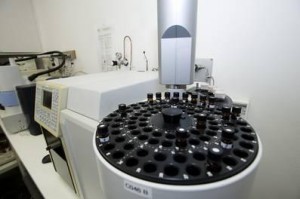In our on-going series on DUI blood testing, we aim to educate our readers to help them understand the evidence collected against them. Today we examine How Blood is Tested for DUI Cases.

When it comes to blood testing for DUI cases they come in two types and then sub-types. The first category depends upon what the police are looking for. They have to make a choice. Are they looking for ethanol (drinking alcohol) alone or are they looking for drugs (illicit or prescribed) or both? How they make that decision makes the determination of what machine they use and configuration of that machine that they use to come to a result because these machines have specific settings for each chemical that is being tested for.
For alcohol, there are three types of test. The first one is technically called an enzymatic assay. This is a non-specific indirect measure of testing (see the post about Hospital Blood and how WellSpan should be congratulated). This method is fast and cheap and primarily used in hospitals when they need a quick answer, but not necessarily the perfect answer. This is why it is referred to as hospital blood. Enzymatic assay testing is an indirect measure for alcohol meaning it does not isolate ethanol. In reality, there are many substances that have similar properties to thanol and thus the machine confuses them and produces a false positive reading. Common substances like lactate and common drugs such as Tylenol can be falsely identified as alcohol through this method.
The second category is the forensic tests for alcohol through gas chromatography (GC). Gas chromatography seeks to identify and separate the alcohol and then measure it. There are two types of GC, Gas Chromatography with Flame Ionization Detector (GC-FID) and Gas Chromatography with Mass Spectrometry (GC-MS).
GC-FID is a very good technique and far better than enzymatic assay, but has it’s inherit shortcomings. One of the major problems with this method is its reliance on the lab technicians to teach it what is and isn’t ethanol. This is quite complex as there are over 65 million registered chemical compounds according to CAS and if the machine is not trained properly, meaning how to pick out ethanol and ethanol alone to the exclusion of every other compound in the universe, then you will get the wrong result. In essence, the machine is a fancy bean counter, but you have to show it what to count and what not to count in order for the result to be right.
GC-MS is another technique and is by far the most specific of all of these tests, but it too has weaknesses. GC-MS also has to be taught what ethanol is and what it isn’t. But when it comes to ethanol, it can prove the identity of ethanol to the exclusion of everything else unlike GC-FID. Because it can more readily and repeatedly pick out ethanol than GC-FID, it therefore is more accurate and precise as to its weighing and reporting of ethanol potentially. It is a great technique but requires specialized training to operate and should be reserved to true scientists who understand the underlying science or the potential for well-intentioned people making errors in reporting can occur. Although this is the best forensic technique by far if properly conducted, no crime laboratories in the United States (except Oklahoma) use it.
thestats says:
some clients with the help of good lawyers have used this piece of evidence to overturn their dui. site
Ban ronaldo says:
Indeed a wonderful post. I have been studying the chromatography, spectroscopy etc. and do look over the web for latest and informative stuff and just landed on your blog. Thanks for writing such good posts and as I have subscribed to your blog, I do expect that you will be posting nice stuff like this on a regular basis.